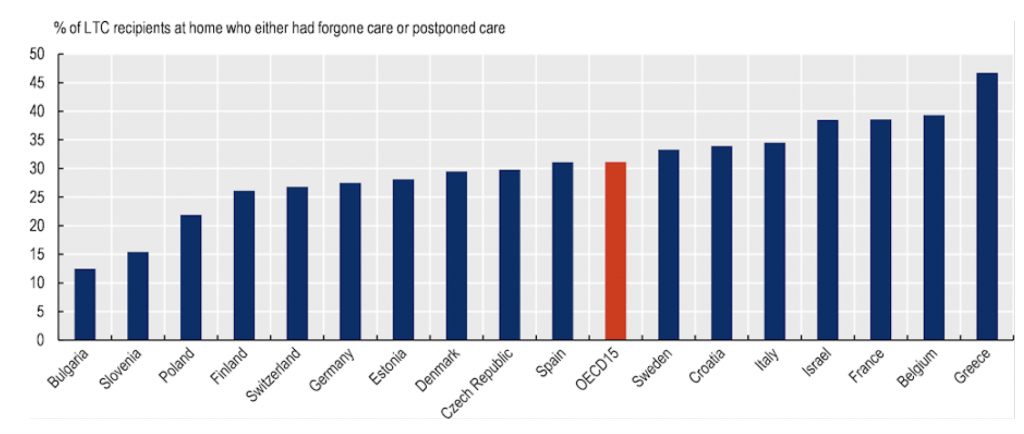Two years into the pandemic, governments worldwide have started to relax their social distancing policies. However, healthcare systems protract to be severely impacted by ongoing infections and a growing reservoir of patients waiting for planned treatments.
While vaccines have been extremely successful in reducing hospitalization and mortality rates, infection tenancy policies protract to stupefy our hospitals’ regular operations. In many respects, COVID-19 created a perfect storm. It came at a time when many healthcare systems were once severely stressed, dealing with an increasing undersong of disease within white-haired populations, and chronic staff shortages.
The pandemic suspended most non-urgent, elective procedures and rejuvenating care; consequently, the superintendency reservoir increased. In England alone, 6 million people were waiting for treatment at the end of December 2021. It’s unscientific that 8 million people have undiagnosed conditions, and these are the people who stayed yonder from their healthcare providers for fear of transmissible COVID-19.1 The situation is similar wideness Europe and North America, with the Organization for Economic Co-operation and Minutiae (OECD) reporting significant numbers of people with long-term conditions missing essential aspects of their care.2

They say, “necessity is the mother of innovation,†which was unmistakably the specimen during the pandemic. Rapid minutiae of vaccines, novel use of medicines to treat infected patients, and monumental velocity of virtual superintendency paint a picture of innovation. Post-pandemic, some commentators are suggesting this innovation should protract with the recovery, giving countries a unique opportunity to transpiration things for the better, addressing health inequalities, and increasing sustainability.3
From a technology perspective, healthcare providers can utilize the lessons learned throughout the pandemic. They can implement new ways to slide the spritz of patients from their reservoir into treatment and then onto a swift venting and rehabilitation.
Push-Up Stands
Strauss Multifunctional Portable Push Up Board & Bars
Heavy duty, light weight, premium plastic "plug & press" push up board with multiple angles, double locker non-slip hand grips, portable, simple assembly perfect for home, travelling, outdoor, office etc
At each stage of this journey, keeping in regular contact with the patient will be hair-trigger to the success of the unshortened process. In many ways, the operational complexity of managing backlogs, clinical capacity, and staff schedules echoes the complexity and interdependencies of the underlying technical infrastructure. Keeping patients quickly flowing through the system requires each cog in that system to work flawlessly, at all times.
Adopting a cross-architectural view of their IT infrastructure and a platform tideway will enable healthcare providers to slide their digital capabilities, automate patient outreach through technology and self-service, and increase the spritz of patients through the superintendency continuum.4
From a patient’s perspective, healthcare providers should be deploying digital solutions that can:
- Utilize the time surpassing treatment to educate and inform patients well-nigh their condition5
- Monitor changes in circumstance that may yo-yo the priority or treatment pathway
- Gather pre-operative information and prepare patients for admission
- Streamline the journey through the hospital by tracking people and assets
- Reduce in-patient stays by enabling patients to go home as soon as they are medically fit
- Prevent unnecessary readmission by providing post-acute remote superintendency or monitoring
- Observe each stage of the digital journey to ensure it is meeting expectations
Ultimately, the number of patients waiting for treatment will normalize when superintendency teams have the topics to treat them. While streamlined processes and strained intelligence plicate the skills of a healthcare professional, they will never replace the human touch. To write the workforce challenges, healthcare providers will need to reimagine clinical operations and prefer technology-driven processes that increase efficiency. This will lessen the undersong on clinical staff and alimony people within the healthcare profession.
Rapid innovation was commonplace at the height of the pandemic, with virtual care rhadamanthine the norm. Although the uncontrived impact of the pandemic on society is now waning, there are increasingly people waiting for treatment now than overly before. To write this backlog, healthcare providers must protract innovating, expanding their digital offers by investing in their underlying technical infrastructure, raising a navigate architectural approach, and ensuring that their digital solutions provide a frictionless wits to patients and staff.
Sources:







